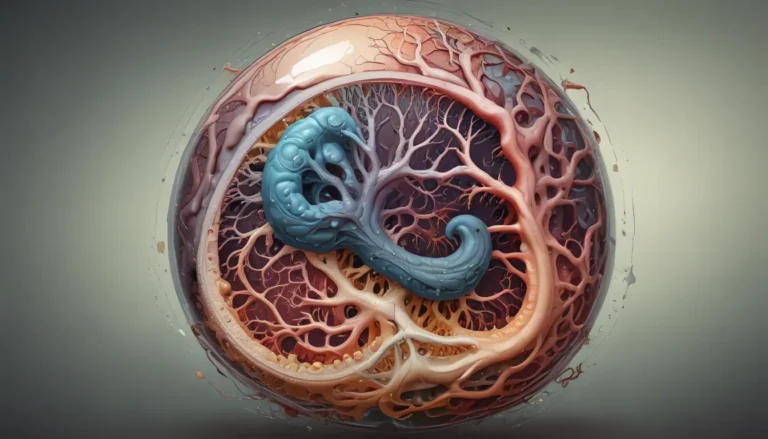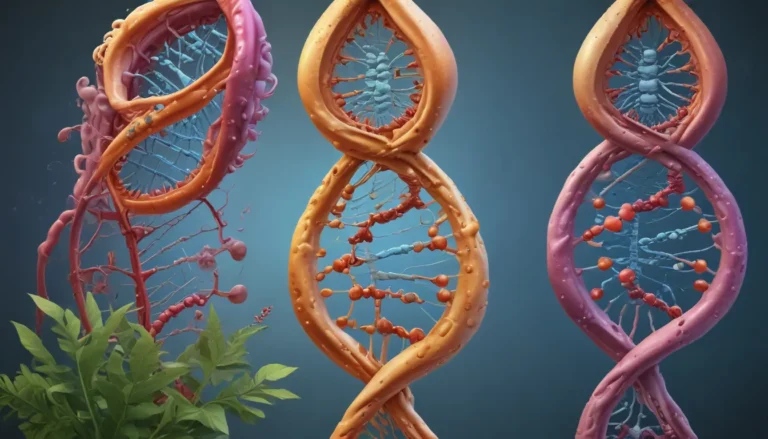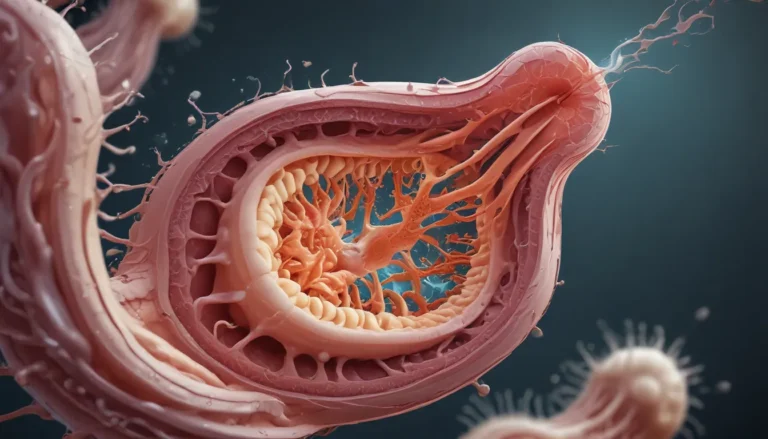A Note About Images: The images used in our articles are for illustration purposes only and may not exactly match the content. They are meant to engage readers, but the text should be relied upon for accurate information.
Are you ready to embark on a journey into the intricate world of the neuromuscular junction? Dive deep into the fascinating network that links our nervous system to our muscles, enabling us to move with precision and grace. In this article, we will uncover 9 intriguing facts about the neuromuscular junction that will expand your knowledge and appreciation of this vital system. From the lightning-fast communication bridge between nerves and muscles to the impact of neuromuscular diseases, we will explore the complexities and significance of this junction. Let’s unravel the mysteries and unveil the astonishing insights hidden within the realm of the neuromuscular junction!
Exploring the Neuromuscular Junction
The neuromuscular junction serves as a super-fast communication bridge between nerves and muscles, facilitating rapid muscle movements essential for our everyday activities. Disruptions in this junction can lead to muscle diseases, emphasizing its crucial role in maintaining the smooth functioning of our bodies.
Understanding Electrical and Chemical Signals
At the neuromuscular junction, both electrical and chemical signals play a vital role in transmitting messages from the brain to the muscles. When an electrical signal, known as an action potential, reaches the end of a motor neuron, it triggers the release of neurotransmitters into the synaptic cleft.
The Key Player: Acetylcholine
Acetylcholine emerges as the primary neurotransmitter responsible for signal transmission at the neuromuscular junction. By binding to receptors on the muscle fiber, acetylcholine initiates muscle contraction, allowing us to perform voluntary movements with ease.
The Speed of Communication
The transmission of signals at the neuromuscular junction occurs at astonishing speed. In just milliseconds, the action potential travels down the motor neuron, and acetylcholine binds to receptors on the muscle fiber, showcasing the remarkable efficiency of this communication network.
Establishing a One-to-One Relationship
Each motor neuron establishes a unique connection with a specific muscle fiber at the neuromuscular junction, ensuring precise control over muscle contraction. This one-to-one relationship is essential for coordinating movements with accuracy and efficiency.
The Importance of the Motor End Plate
The motor end plate, located on the muscle fiber, plays a crucial role in interacting with the motor neuron, facilitating efficient signal transmission. This specialized region is optimized to receive and transmit signals effectively, enabling seamless communication between nerves and muscles.
Myelin Sheath: Providing Protection
The motor neuron leading to the neuromuscular junction is enveloped in a myelin sheath, serving as insulation to protect the nerve fibers. This protective covering enhances the conduction of electrical signals, contributing to the rapid transmission of messages within the neuromuscular junction.
Delving Into Synaptic Vesicles
Inside the motor neuron, neurotransmitters like acetylcholine are stored in tiny sacs known as synaptic vesicles. When an action potential reaches the end of the neuron, these vesicles release their contents into the synaptic cleft, initiating the process of signal transmission.
Fine-Tuning Muscle Contractions
The neuromuscular junction plays a pivotal role in fine-tuning muscle contractions, allowing for the adjustment of contraction strength and duration. By modulating the frequency and intensity of signals transmitted at the junction, the body can regulate muscle movements with precision.
Unraveling Neuromuscular Diseases
Disruptions in the neuromuscular junction can give rise to various neuromuscular diseases, such as myasthenia gravis and Lambert-Eaton syndrome. These conditions impact the transmission of signals between the motor neuron and muscle fiber, resulting in muscle weakness and fatigue.
Through these 9 captivating facts, we gain a deeper understanding of the significance of the neuromuscular junction in orchestrating the intricate movements of the human body. By unraveling the complexities of this junction, we unveil the profound interplay between the nervous and muscular systems, offering valuable insights into the mechanisms underlying our physical capabilities.
Delving Deeper into the Neuromuscular Junction
As we delve deeper into the mysteries of the neuromuscular junction, we open doors to new possibilities in understanding and treating neuromuscular disorders. This junction serves as a focal point for exploring the complexities of our biological processes, shedding light on the underlying mechanisms of movement and coordination.
FAQs: Unveiling Additional Insights
- What is the neuromuscular junction?
-
The neuromuscular junction is the connection point between nerve cells (motor neurons) and muscle fibers, facilitating the transmission of nerve impulses that lead to muscle contraction.
-
How does the neuromuscular junction function?
-
When an electrical signal reaches the end of a motor neuron, it triggers the release of neurotransmitters, notably acetylcholine, into the synaptic cleft. These neurotransmitters bind to receptors on the muscle fiber, initiating muscle contraction.
-
What occurs in neuromuscular disorders?
-
Neuromuscular disorders disrupt the function of the neuromuscular junction, resulting in symptoms like muscle weakness and fatigue. Conditions such as myasthenia gravis and muscular dystrophy exemplify neuromuscular disorders.
-
Can neuromuscular disorders be treated?
-
While many neuromuscular disorders lack a cure, treatments can help manage symptoms and enhance quality of life. Medications, physical therapy, and surgical interventions may be utilized to address these conditions.
-
Where are neuromuscular junctions located in the body?
- Neuromuscular junctions are found in skeletal muscles throughout the body, facilitating voluntary movements. They are not present in smooth muscles or cardiac muscles, which operate through distinct contraction mechanisms.
Embark on an Enlightening Journey
The neuromuscular junction serves as a pivotal link between the nervous system and muscles, enabling the coordination and execution of our movements with precision. By immersing ourselves in the captivating facts surrounding this junction, we gain a profound appreciation for the intricacies and functionalities of our bodies.
Join us on this enlightening journey through the wondrous world of the neuromuscular junction, where each revelation deepens our understanding of the complexities that govern our physical capabilities. As we unravel the mysteries of this vital connection, we pave the way for advancements in addressing neuromuscular disorders and enhancing the lives of those impacted by these conditions.
Rediscover the Intriguing Realms of the Nervous System
The wonders of the neuromuscular junction are just the beginning of a vast world of neural communication and signaling pathways. Embark on a journey to explore the intricate processes of synaptic transmission, delve into the realm of neurotransmitters, and uncover the electrifying journey of action potentials that animate our bodies. Each aspect offers a wealth of captivating facts waiting to be discovered and appreciated.
Your Feedback Matters
At the core of our mission lies a commitment to delivering reliable and engaging content that empowers and enlightens our readers. Every fact shared on our platform is contributed by individuals like you, enriching our database with diverse insights and information. Our dedicated editors meticulously review each submission to ensure the utmost accuracy and credibility, guaranteeing that the content we offer is both captivating and trustworthy. Trust in our dedication to quality and authenticity as we embark on this journey of discovery and learning together.






